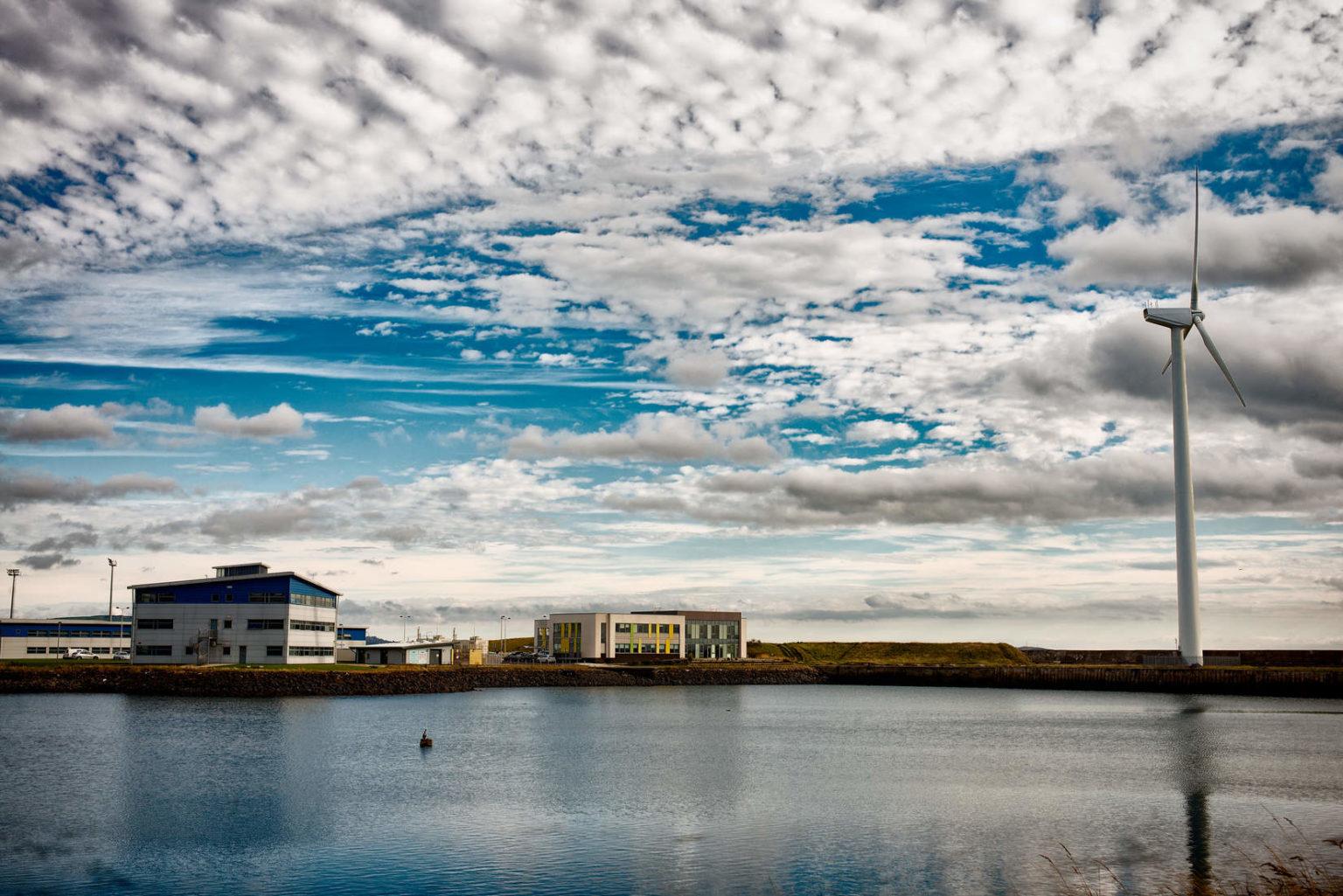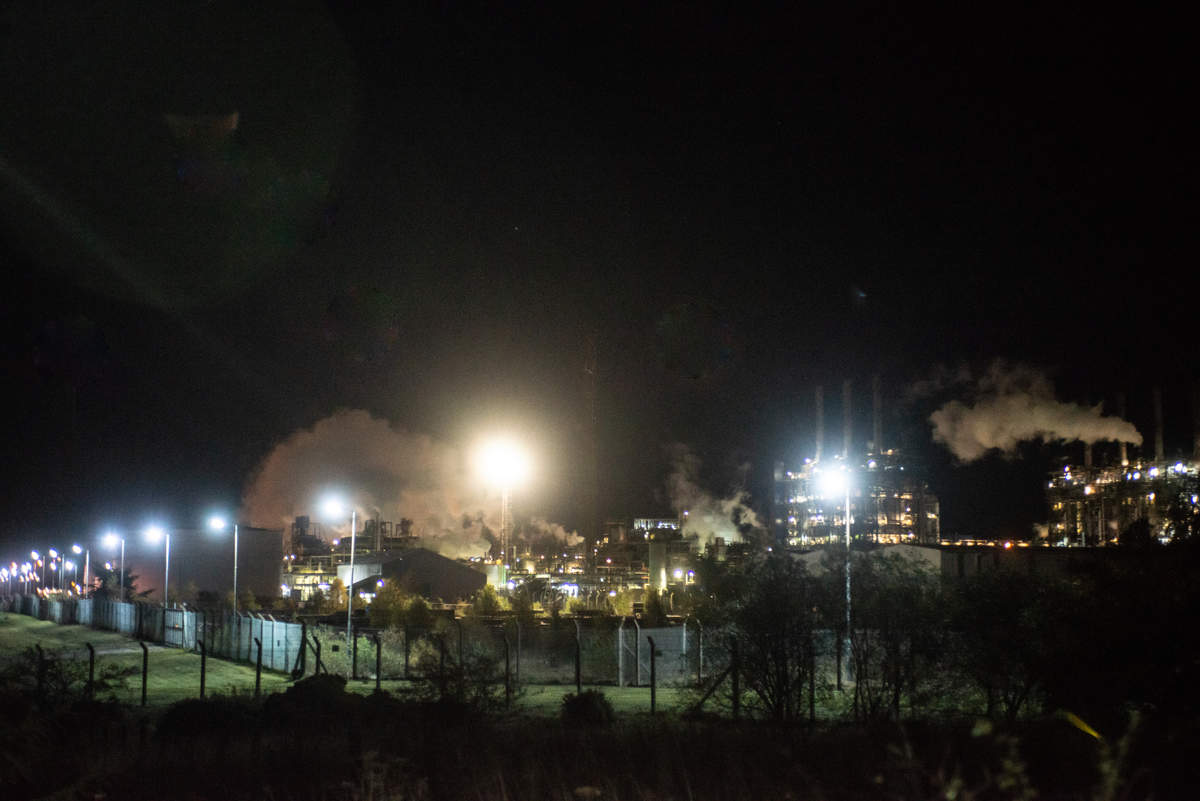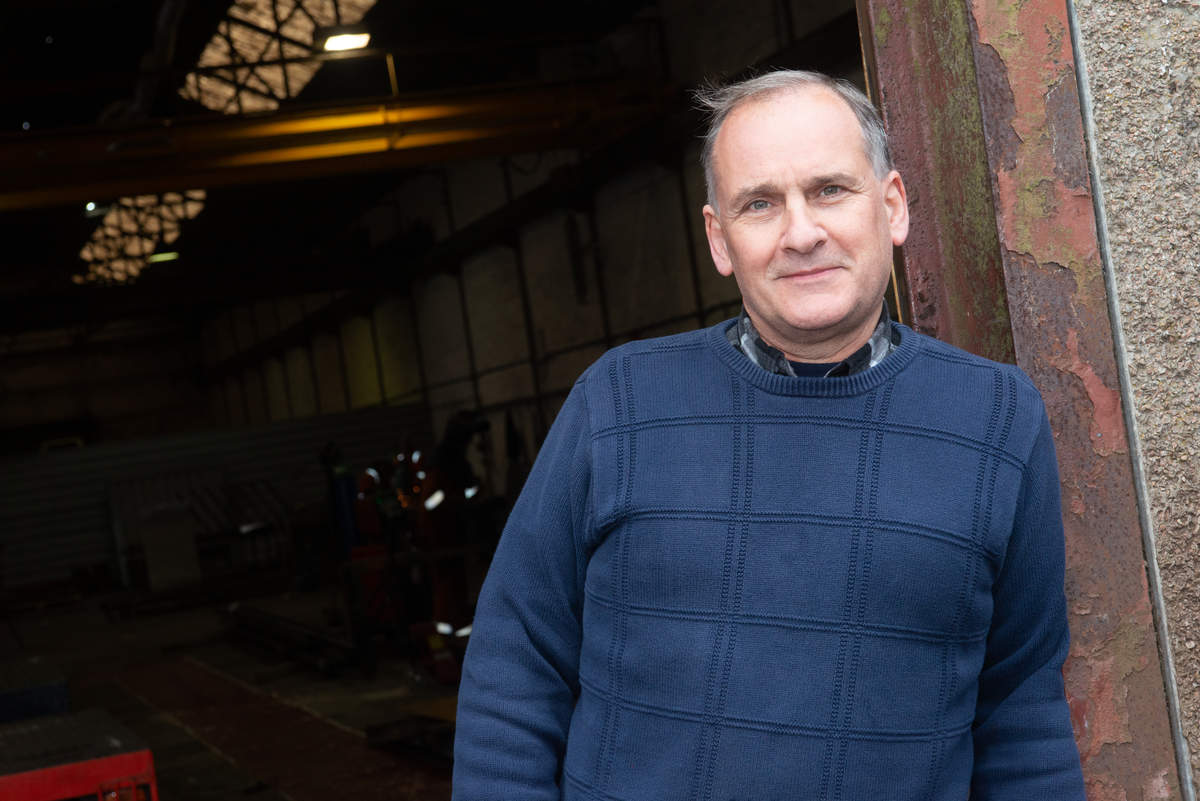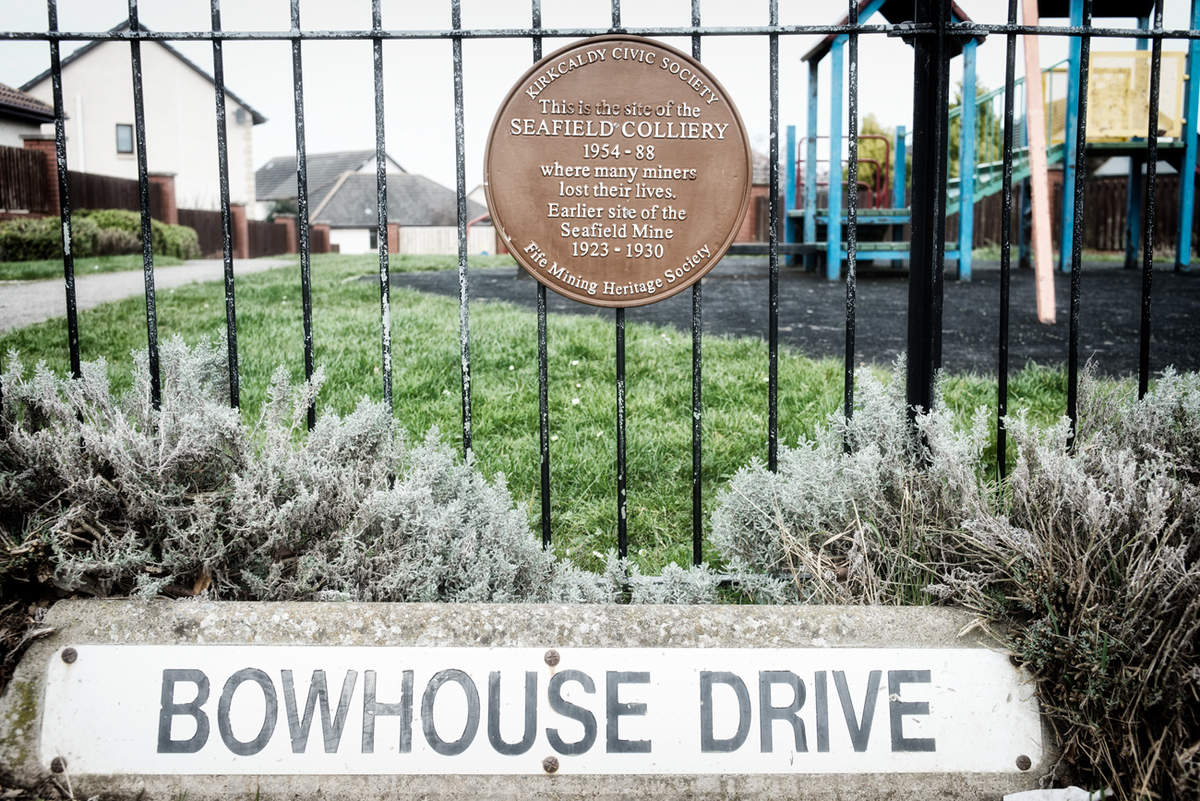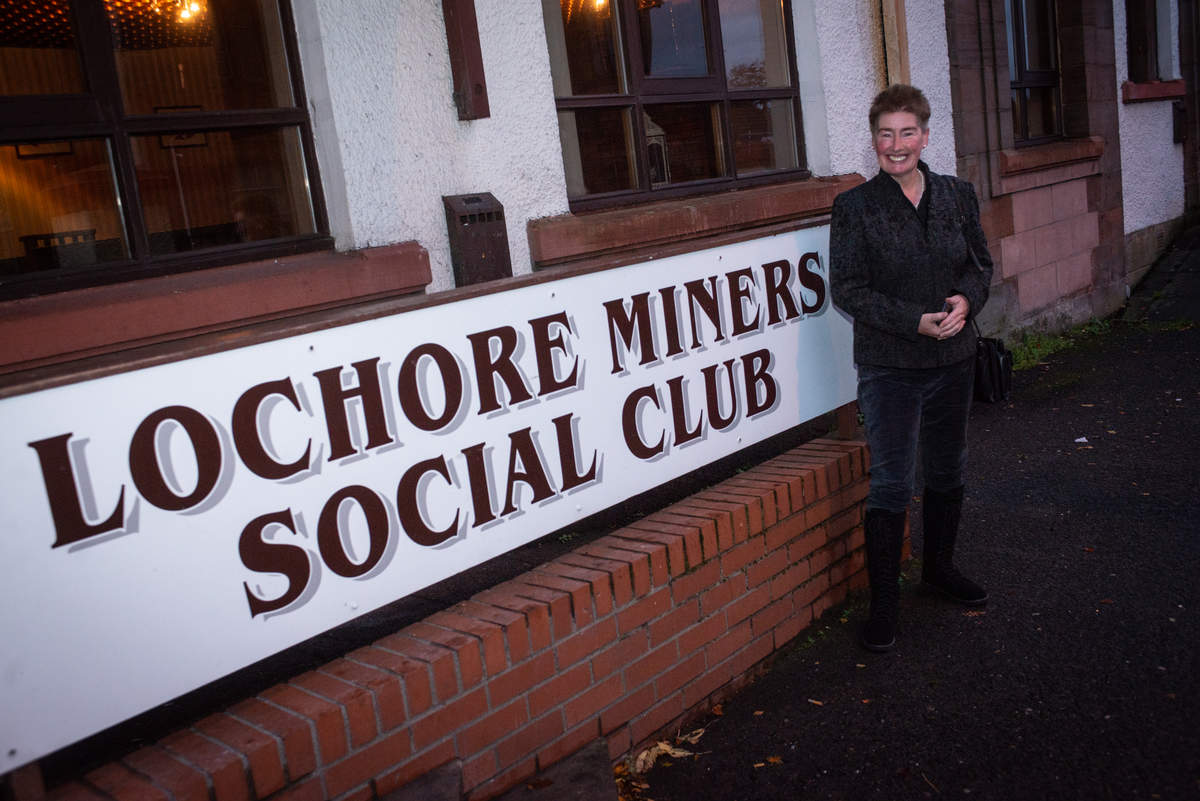In this first of our new series ‘Just Transition, from Fossil Fuels to Environmental Justice‘, we look at the history of energy in Fife, and begin to mine the prospects for a more sustainable future to meet our climate crisis.
In 2002, the Fife mine that was still powering Scotland’s last coal-fired power station at Longannet flooded. Its closure brought to an end 500 long years of underground labouring for coal in Scotland. In Fife in particular, an early starter in the industry, silent monuments to the dirty, dangerous work of extraction dot the landscape.
Energy has never been far from the surface of Scottish politics. Launched on the world by coal deposits that happened to lie close to navigable waterways, modern Scotland’s birth coincides directly with the moment of energy transition that, on current trajectories, will see the world warm by a cataclysmic four degrees Celsius by the end of this century.
In the post-war era, the Labour Party in Scotland emerged as the dominant political force with the nationalisation of heavy industries such as coal production, while the SNP would only become a serious electoral threat to this dominance after the development of North Sea oil. The dire economic troubles of Scottish industry in the 1970s pointed to the inescapable prospect that oil, in the hands of a newly empowered nation, could offer an alternative to industrial decline.
The now notorious 1974 McCrone Report, long suppressed, saw a UK government civil servant explicitly outline the immense prosperity that would have accrued to an independent Scotland exercising its sovereignty over North Sea oil. As it turned out, the failure to channel this resource towards addressing specifically Scottish priorities, or to establish a public fund like Norway, remains a potent argument in the Scottish National Party’s (SNP) claim that Scotland should not be governed from London.
However, since winning power in Scotland in 2007, the SNP has self-consciously sought to position itself as a leader on climate change. After 10 years of working within the limits of its devolved powers in office and setting world-leading emissions reduction targets, the current SNP government recently announced a Just Transition Commission headed by Professor Jim Skea.
The potential for an unprecedented step-change, preserving jobs and skills, aligned with calls for a global “Green New Deal,” could open the next, and indeed final, chapter on Scotland’s centuries-long relationship with carbon capital.
This relationship was first set down in a 1606 Act of the (still independent) Scottish Parliament, outlining a form of serfdom to prevent colliers absconding from their masters, a reminder of the dark legacy of exploitation and coercion that still haunts former mining communities in Fife.
In this series of articles, we’ll look at the prospects of a just transition, by talking to those living and working in Scottish communities defined by the fossil fuel industry, and consider how this urgent agenda for change could come about.
History, Energy, Landscape
At the heart of the challenge of a just transition is the obvious reality that previous energy transitions have tended to be patchwork affairs.
In Scotland, the enormous growth of the North Sea oil sector did offer an alternative for workers in regions hit by deindustrialization across the UK, in addition to assisting with the country’s balance of payments troubles and providing the UK Exchequer with funds to, amongst other priorities, maintain otherwise socially-unsustainable levels of unemployment.
In present day Fife, which had an unemployment rate of 18.8 percent in 1986, the current hybrid energy mix is visible across the landscape. Onshore turbines stand out on the hills above the now-silent Longannet power station, closed in 2016 but still dominating the upper reaches of the Forth Estuary. The recent Climate Change Committee report on Scotland couldn’t help but note how this single act accounted for a massive slice of Scotland’s decarbonisation progress. The plant was the largest power station in Scotland, and the WWF listed it as one of the 30 dirtiest in Europe.
Just across the river, at Grangemouth, around four percent of Scotland’s GDP is generated by the refinery and petrochemical operation built by a nationalised BP and now run by private US firm INEOS. Today, the combined site’s vast demand for energy places it at the top of the list of emitters north of the border.
To the east, close by the town of Cowdenbeath, which was once at the heart of Fife’s giant coal industry, lies a spin-off operation, referred to colloquially as Mossmorran, where natural gas from the North Sea Brent field is processed.
Depending on production schedules, the giant glow of the plant’s main flare can be seen clearly from Edinburgh, a reminder to legislators in the capital that a transition to a decarbonised economy is still far from being realised.
Mary Lockhart, a Councillor for a string of former mining villages in the nearby Lochgelly, Cardenden and Benarty ward, has followed in her mother’s footsteps in campaigning vociferously against continued use of the plant. With flaring becoming an increasingly frequent practice, she claims many local residents have had enough:
“The social impact of that flaring can’t be underestimated. If you’re in Lochgelly on the hill at the top of it it’s like the noise of multiple aircraft taking off, it’s like if you’ve suddenly moved to being inside the periphery of Glasgow airport.”
“Children were wetting the bed, were frighted for weeks to sleep on their own, children were waking up screaming because they thought the house was on fire”, she explains.
The site consists of both a gas extraction facility run by Shell and an ethylene production plant operated by ExxonMobil. The flaring is the result of the the fact that the St Fergus pipeline, which provides 15 percent of Scotland’s gas supply, cannot be shut down automatically. For the operators, flaring is therefore an essential safety mechanism.
But living alongside this crucial node in Scotland’s carbon supply chain is becoming increasingly troubling. Lockhart continues:
“You can actually smell the smell, a metallic petrochemical smell. I was shown people who’d had their washing out and black smudges were on it. People should not have to live like that, actually some miles from the installation.”
Behind this growing resentment lies the fact that the Mossmorran workforce is relatively small — around 300 permanent employees, many of whom do not live locally, with the companies showing only a token interest in the welfare of the populations they operate so close to. ExxonMobil publish newsletters refuting such claims, citing £150,000 worth of investment in community schemes, and workplace volunteering figures showing that the 70 percent of their workforce live within six miles of the plant.
I meet Councillor Lockhart in the cosy 1970s splendour of the Lochore Miners’ Welfare Society and Social Club. She can’t help but draw comparisons between the two industries:
“You look at this building that was built by the miners out of their wages for themselves and you think what the value of this is. Mossmorran doesn’t do anything like that for anybody.”
“The community return is minuscule compared to the impact and no one deals with it and they just deny, and deny, and deny and they don’t listen.”
The Scottish Environmental Protection Agency (SEPA) has launched an investigation into the flaring issue and is scheduled to report in November. It has already issued fines and final warning letters to both Shell and Exxon.
Lockhart, born in the village which she now represents on Fife Council, lives in the house once occupied by renowned miners’ leader Lawrence Daly.
Her predecessor Willie Clarke served the area for forty years, initially as a Communist, and latterly as an independent. The area’s history of left-wing radicalism — it was the last constituency in Britain to elect a Communist MP — is still tangible. A legacy, perhaps, of the brutal conditions once prevalent underground, from the distant memory of serfdom to the totemic strikes of the 20th century.
“When the industry shut down really there was nothing else. Because these are rural communities… So for a while there was a lot of unemployment, but actually people took to doing all sorts of things… the people are fiercely independent and they work. We really do have the working class here”, says Lockhart.
Many ex-miners invested their redundancy money to set up as sole traders, moving from a heavily social sector to an individualised one: white vans with rusting wheel hubs are the norm outside many of the village’s pebbledash houses. Others went offshore, retrained, or found jobs at the Rosyth Naval Dockyard. Few work at Mossmorran.
If it is galling for these former mining villages to be living alongside the fires of the industry that came, in some respects, to replace the pits, it is clearly not just proximity to the noise, dirt and danger of extraction that is controversial. It is, rather, a sense of dislocation, an ongoing reminder that when the miners lost their ability to exert control over Britain’s energy supply in 1984-5, the gates did not just shut at the pit heads. The very idea of local or worker control over energy was fenced off too.
That transition, argue signatories to a just transition agreement that urges immediate action to clean up Scotland’s economy, was demonstrably unjust. Today, the fruits of this modern form of enclosure can be seen in the pockets of poverty that now ring major centres for oil and gas production — whether in Fife, Grangemouth or Aberdeen.
Towards a Just Transition
Instead, a just transition will be shaped in a context in which the boom years of fossil fuel extraction in Scotland are an increasingly a distant memory. But what of the next boom, the apparent ability of Scotland to become, in former First Minister Alex Salmond’s memorable phrase, ‘the Saudi Arabia of renewable energy’?
A few miles down the road from Ballingry, at an industrial estate consisting of former National Coal Board warehouses outside Cowdenbeath, the steel building blocks of a post-carbon economy are, quite literally, taking shape.
Raymond Imrie, Director of AJS Productions, founded this small steel fabrication firm, in partnership with design engineer Andrew Scott, five years ago.
“Basically 75 percent of our work now comes from the renewables sector… Obviously we have a track record of what we’ve done in the past and what we’ve produced so we tend to be able to provide the service that they’re asking for and it’s looking good,” says Imrie.
However, scaling up production has proved problematic. A specialist in wave and tidal machines, AJS still works on contracts for the oil and gas sector, and employs between five and 15 workers depending on its order book.
Despite the company’s record, expertise, and location close to some of the most productive renewable generation sites in the world, the sector is still precarious, in comparison to more established industries:
“We could spend quite a lot of time talking to the client, helping them develop their product and then they don’t get the funding, so we find sometimes that we put a lot of hours in for nothing.”
As with any other sector, the uncertainty of Brexit has also raised a major question around medium-term investment:
“There have been a couple of bigger companies that have failed, after millions and millions of investment… so obviously investors are a bit anxious. There is money from the EU but that might stop very abruptly”, he explains.
Imrie’s concerns are shared by First Minister Nicola Sturgeon. Citing the £500 million of European Investment Bank funds behind the massive Beatrice Wind Farm in the Moray Firth, she noted:
“Scotland has also done disproportionately well from EU support for research and innovation in the renewables sector. We want that to continue.”
“A hard Brexit could potentially cause harm to our supply chain and skills base, our influence on big decisions on issues such as regulation and energy flows, and our access to funding.”
If Brexit has the capacity to cut off access to specific funds, wider economic insecurity makes longer-term investments, such as hiring more apprentices, growing the workforce and investing in new machines and premises, increasingly challenging for AJS:
“I’d like to employ 100 men, I’d like to take more guys on, but as I say I don’t think I’m just speaking for myself, I think I’m speaking for every fabrication shop and even the engineering shops. Before you’d have orders in for six, seven, eight months and you knew you had work, now it’s a lot more cut-throat and that insecurity makes it difficult for you to take guys on”, says Imrie.
Precarious Renewables
If concerns around the macro-economic picture post-Brexit sound abstract, the current precariousness of the renewables sector in Fife was made all too tangible last year with the collapse of neighbouring Burntisland-based firm BiFab.
At its peak, BiFab directly employed a workforce of 400, alongside 1,000 contractors. Yet difficulties with a single contract to supply jackets for the same European Investment Bank-funded Beatrice windfarm saw the firm report £50 million of losses.
Prior to a Scottish government-organised rescue package, which granted a reprieve in partnership with a subsidiary of Canadian-owned JV Driver, the workforce had dwindled to just a handful by May 2018. The deal was achieved in the context of a dramatic stand-off led by the GMB union.
Although GMB themselves did not sign up to it, the just transition statement contains a clear call for greater state intervention and partnership. Yet the celebrated and burgeoning offshore wind sector remains dominated by large energy multinationals such as Siemens Wind Power and EDF.
For Imrie and his small firm straining towards expansion, but hemmed in by uncertainty, there is an obvious role that only government can play in making the kind of step-change that a just transition demands:
“I think infrastructure is a big thing. I know that the Fife economy and the Scottish economy lose a lot of work down to what we have in facilities. I believe we’ve got the skill, we’ve got the workforce, but it’s the infrastructure.”
He continues, “If you look at some of the big dockyards in Poland or even down at Newcastle, BiFab were competing against them for the work, and they did get some of the work but they struggled with the work. And it wasn’t the workforce… the reason I believe that BiFab struggled was infrastructure.”
Raymond also believes that local firms in Fife could, through forming a consortium, start to bid for work from the big players in sectors like offshore wind. But for now, there is no guarantee that major decarbonisation efforts, such as offshore renewable energy production in the waters off the east coast, will be reflected in substantial gains for the local economy onshore.
From Govan to Paris
For Scotland to meet its obligations under the Paris Agreement, it can only emit a total of 300 million tonnes more carbon dioxide – meaning it has to cut emissions by at least ten percent every year. Whichever way you look at it, this will be the greatest challenge faced by Scottish industry for a generation.
Although Scotland’s headline renewable energy potential has been a part of the political agenda for years now, it is hard to ignore the muscle memory provoked by the BiFab dispute in Burntisland — which culminated in a dramatic work-in, in which many of the workforce stayed on site to complete orders.
The parallel with the iconic work-in led by Jimmy Reid at Upper Clyde Shipbuilders in 1972 was clear. The pain of Scotland’s rapid industrialisation precisely at the moment when North Sea oil was coming online is still potent, emotive and bound up with the identity of countless communities along the nation’s two great river estuaries.
When 1,400 BiFab workers marched on the Scottish Parliament in December last year demanding their jobs be protected as a core part of Scotland’s energy future, the message from GMB Scotland Secretary Gary Smith was unequivocal:
“This is the biggest industrial dispute for a generation and our message is clear — we will not allow these yards to be closed to become another museum of Scotland’s industry.”
Future Thinking
The tall structure that once housed the winding gear of the Mary Pit near Ballingry now sits amidst the greenery of Lochore Meadows Country Park. It stands there along with a squat green steam-engine or ‘pug’, to memorialise an industry that was once knitted into the fabric of everyday life.
Mary Lockhart, who remembers playing on still smouldering bings near the pit as a child, recalls, “The pug said Mary on it and it was my pug and when we went down the Pit Road people used to tell me it was mine. I’ve always had this affinity with it.”
For many, the natural sense of intimacy, ownership and connection that grew up around the mining villages in Fife might seem as dated as the velour upholstery in the Lochore Miners’ Social.
But the just transition agreement signed by Friends of the Earth Scotland and the large Scottish trade unions has no such qualms, stating:
“Where necessary to secure change at sufficient pace and scale, options for public and community ownership or partial stakes in flagship projects and enterprises should be pursued.”
Could this community, built on coal production and still struggling with the demons of past transitions, embrace such dramatic changes?
“I think in a place like this, there’s a resilience. There’s a resilience”, says Mary.
‘If you persuade people that what you are doing is investing in the future, their future and their children’s future and their grandchildren’s future, and the future of their community and their country, I think they can be carried along.”
All images by Alan McCredie (c)
Subscribe to our newsletter
Stay up to date with DeSmog news and alerts


